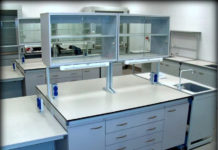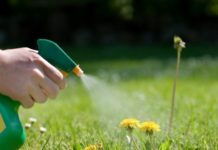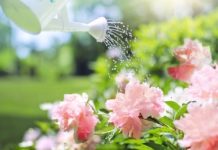A beautiful and cozy home is not only rich renovation, but also decoration. Paintings, lamps and, of course, flowers. It is they who create a favorable atmosphere in the interior for creativity, comfort and harmony. Flowering or woody, they are always appropriate in living rooms. The editors of the site "bestx.htgetrid.com/en/" prepared an overview of the most unpretentious indoor plants.
An introduction to the world of plants begins with indoor plants. Often these are the messengers of exotic countries, which in the conditions of the northern climate do not take root on the street, But ideal conditions are created for them in the rooms, and they develop well, grow and bloom to the delight of the hostesses.
Content
When to buy indoor plants
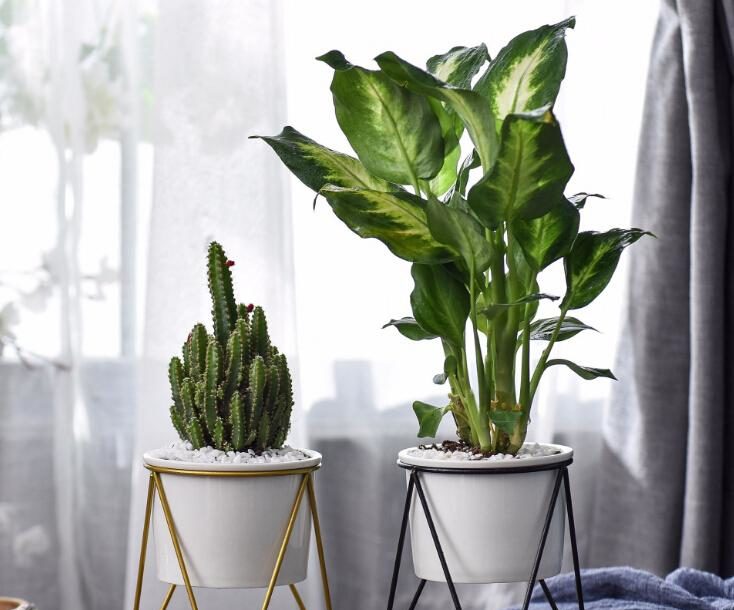
It is better to buy plants for home, of course, in summer or spring, during the warm season. They do not have to be carried along the street, where the freezing temperature is. And this is a big stress for the flower.
Over the summer, the plant adapts to the room and easily tolerates winter conditions: hot air from the battery and cold air from the window, as well as dry air of a city apartment. But if you had to buy a flower in the winter or you were given it, carefully study the conditions of detention.
Store sellers used to often recommend replanting the flower immediately into a home pot. In winter, it is not recommended to do this, the plant suffered frost stress, and then it was also ripped out of its native land. The most optimal would be to transplant the plant in the next 2-3 weeks, or on the first spring days.
Interestingly, recently, on the contrary, it is not recommended to transplant - the flowers go in a specialized soil, compiled for a specific plant. In the store you can buy special compositions for violets, ficus, palms.
Where to place unpretentious flowers
Have you bought a flower in a pot or got it as a present? And then the hostess begins a headache, where to determine the exotic pet for a permanent residence, so that he would feel good both the sun and the warmth, and so that everyone can see this beauty.
- mostly flowers are placed on windowsills, it is always light there, the hostess is convenient to look after;
- pots with large representatives are placed on the floor: palms, monsters, ficuses. They occupy a decent place in the room, and when buying such an object, it is necessary to take into account the size of the room;
- flower stands where the pots are placed in height from floor to ceiling. All plants can be placed on the stand. On the lower tier - abundantly deciduous, above - flowering and climbing to the very top. The options can be combined. For example, your counter will only have varietal violets.
It is advisable to select flowers in rooms according to their whimsicality to light. On the north side, put shade-tolerant, on the south - light-loving. In the kitchen, flowers can be placed in hanging flowerpots, and a pharmaceutical garden can be arranged on the window.
Medicinal plants take root well in apartments, and if you want tea with mint or lemon balm, then it is always fresh on the window. Plants are not whimsical and do not require special care.
Where does the flower live?
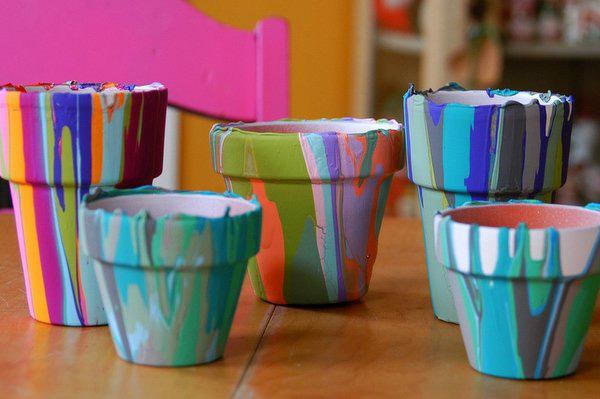
Flowers in the rooms must be planted in a pot.It can be clay or plastic, wood or a basket made of natural materials.
Ceramic
A beautiful ceramic pot is a decoration in itself, and with a beautiful flower it's a double bonus. Ceramics are ideal for plant development, the roots in the pot are comfortable, a pleasant microflora is created inside for the development of the underground part of the plant.
Pot ceramics can be of different qualities, glazed or treated with a special compound. But this does not change its properties.
Benefits:
- natural material;
- pleasant appearance;
- passes air;
- excess moisture leaves not only through the bottom, but also through the pores of the ceramics;
- the soil is always saturated with air.
Disadvantages:
- very fragile material, always breaks when dropped;
- with long-term growth in one pot, the roots grow into ceramics - they are always injured during transplantation;
- over time, mineral deposits appear on the surface of the soil, a coating of white.
Plastic
In the store, the flowers are sold in plastic pots with large drainage holes in the bottom. This is necessary for the flow of air to the roots, as well as for draining excess water from the soil.
There are situations and vice versa, the plant is watered through the pallet. Water is poured into a pot saucer and the plant draws out the liquid on its own.
Benefits:
- it is used for a long time, after planting an adult flower in the old one, you can plant another;
- lightweight, can be transferred to any place in the apartment;
- durable, modern models do not crack or break;
- variety of shapes and colors;
Disadvantages:
- artificial material;
- does not allow air to pass through;
- with small drainage holes, water may stagnate;
- for large plants, a large pot is needed, otherwise the plant will turn over a light house.
Pot shape
The most common option is a round trapezoidal pot, where the upper part is wider, the lower one is narrower. In this format, all plants look beautiful, but it is more convenient to select the size when transplanting.
A pot is considered correct, which is 2-3 cm larger than the previous one, both in height and in diameter. Another important condition is the size of the roots. They should be freely located in depth, not reaching the bottom of 2-5 cm.
Hanging planters usually do not have drainage holes. The plants are planted in a pot with a good layer of garden drainage and then the pot is inserted into the planter.
Conditions for keeping indoor flowers
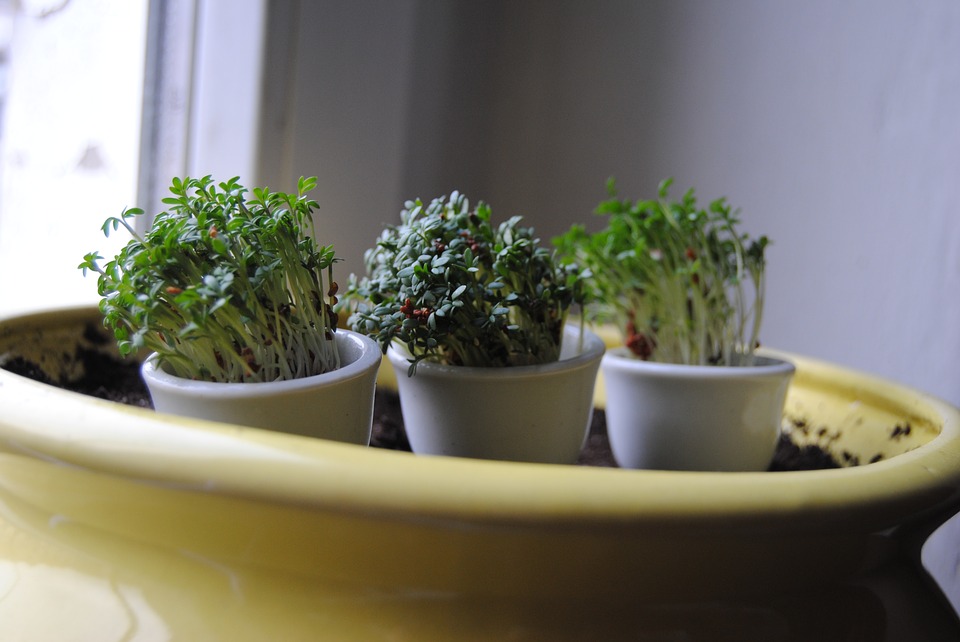
In the article, we consider unpretentious plants. But even they need comfortable conditions. The main requirements for most plants will be soil, temperature and humidity in the room, and illumination. Watering and feeding are also important. Plants are living organisms and require attention. There are unpretentious indoor plants, but they also need basic care.
Many exotics have taken root well on the windowsills and the floor. They grow in height and width, sometimes you have to shorten them, but it also happens that the plant does not grow, but dies or stops developing. It is sad to see empty pots on winter days, and to prevent this from happening, we create conditions for the growth of plants.
Shine
There are shade-loving indoor plants, but they still need light for proper vegetation. Ferns, ficuses, shefflers do not like bright sun, but in its absence the process of photosynthesis does not occur at all - an active growth of green mass.
Abutilons, coleus and many flowering plants are very sad without light. They look painful, and even regular watering and feeding have no effect. Such indoor plants need a sunny side, and if there are no such windows, then additional lighting. In trade there is special lamps for gardeners.
Temperature
A stable climate in winter and summer is a good growth aid. If it is cold on the window in winter, it is better to put the plant on the table or floor. In the cold, a young seedling will die: a weak plant, roots that have not taken root, all this will lead to death.
The optimal temperature range is +18 - 220FROM.As well as for a person who lives comfortably in an apartment, it is also cozy for plants. At low temperatures, it is advisable to heat rooms with flowers.
Humidity
Another development factor that southern pets cannot do without is air humidity. Regular watering and spraying will keep your plants looking juicy and vibrant all the time.
It is necessary to spray with warm water, it can be combined with micronutrient fertilizers. Woody and leafy plants are especially fond of spraying. It is better not to spray beautifully flowering ones during the period of active flowering, this leads to souring inside the flower and quick withering away.
Reproduction
Most often, the plant enters the house in an adult state with a good vegetative part and root system. But there are those who like to experiment and plant a flower from seeds. Not all plants can be grown in this way, but ficus, coleus, violets are often found in the trade.
Houses are propagated most often by layering or dividing the bush. So the engraftment is better and the plant begins to grow faster. In the spring, they break out strong branches or dig out part of the rhizome and plant it in a new pot. Pre-treat the roots with an antibacterial agent so that diseases do not develop on the roots.
Top dressing
In early spring, the plants should be fed. It is better not to experiment with home remedies, but to buy ready-made forms for each category of plants. In the spring, fertilizers with a predominance of nitrogen will be required, this will allow the plants to wake up after hibernation and go into growth. In summer, during the period of active flowering, potash-phosphorus fertilizers are needed, as well as micronutrient fertilizers.
Many fertilizers are in liquid form, they must be diluted with water to the required volume and watered at the root. It is better to apply microfertilizers with a spray.
How to wash plants
Bathing flowers? Of course, dust and dirt accumulates on large leaves, which makes them dull and dejected. It is necessary to wash it with warm water, without using any chemicals.
A small plant can be washed in the shower by wrapping the pot and soil with plastic wrap. A large amount of water should not get into the pot. Rinse all leaves and trunks with a soft stream.
A large plant will not fit in the bath, it will have to be washed with a sponge. Each leaf by hand, from bottom to top. With regular spraying, the shower procedure can be carried out 1 time in 2-3 months.
Rating of unpretentious plants for 2020
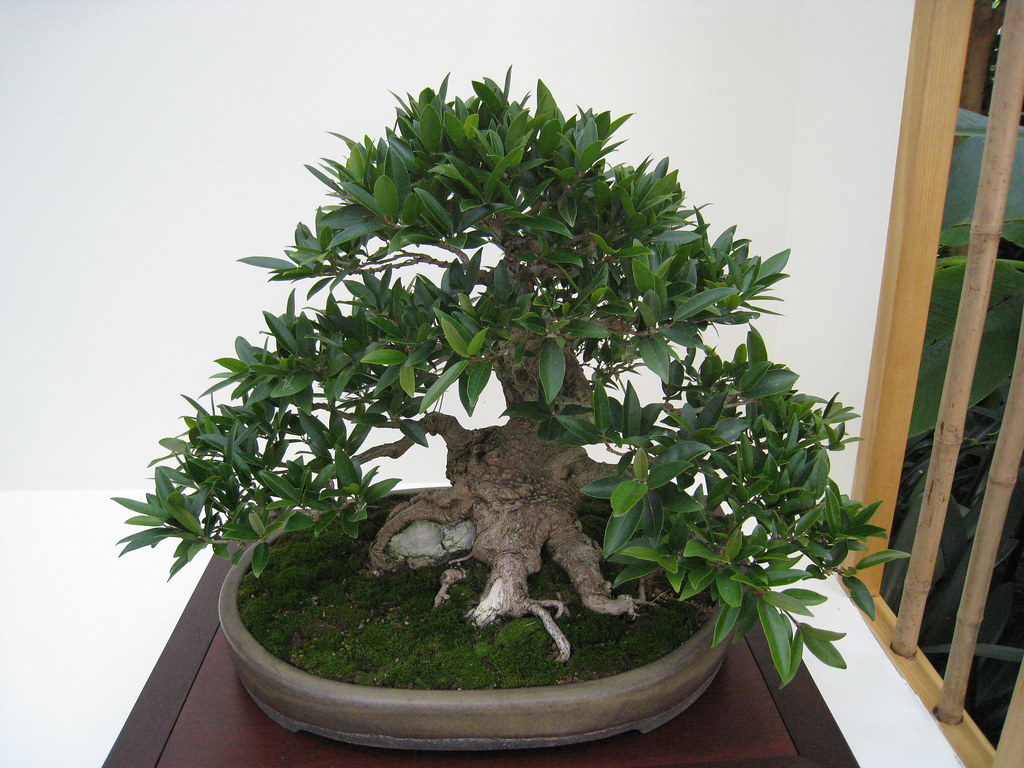
There are flowers that we know from childhood. Aloe, tradescantia, sansevieria were on the windows of our grandmothers and mothers. The plant growing industry is actively developing, and agronomists are developing new varieties and species. The popular geranium has changed its appearance, the shape of the flower, and a delicate aroma, reminiscent of that of my grandmother, remains.
The rating is based on customer reviews of flowers, mainly for home. But office workers also actively spoke out on names that are unpretentious in offices, beautiful and, most importantly, unpretentious in care.
Beautifully flowering plants
Regular grooming and constant attention to the flower is believed to be behind the lush bloom. There are unpretentious flowers that delight everyone with their flowers and do not require constant spraying, loosening and fertilization.
Pelargonium
People call it geranium. The plant of modern agronomy is very different from the old varieties. 40 species are bred in greenhouses and put up for sale. There are ampelous varieties, petals with bright spots or two-color.
Beautiful flowers, very bright in color from pale pink to dark purple. Hats in large colors change quickly one after another. Propagates well by cuttings and layering.

Care features:
The flower grows actively on the window and actively reaches for the sun and often forms on one side. For uniform growth, it is recommended to rotate pelargonium once every 2-3 weeks.
Benefits:
- unpretentious to soil;
- very aromatic;
Disadvantages:
- with an excess of water, it quickly dies;
- grows rapidly, requires replanting or dividing the bush every year.
Begonia
A plant from the subtropics has long settled in apartments. There is just a huge selection in specialized stores, and often housewives decide for a long time which one is better to buy. A riot of colors and a variety of shades delight. Small leaves are always, and the size of the flower is different. Hybrid species are especially good.
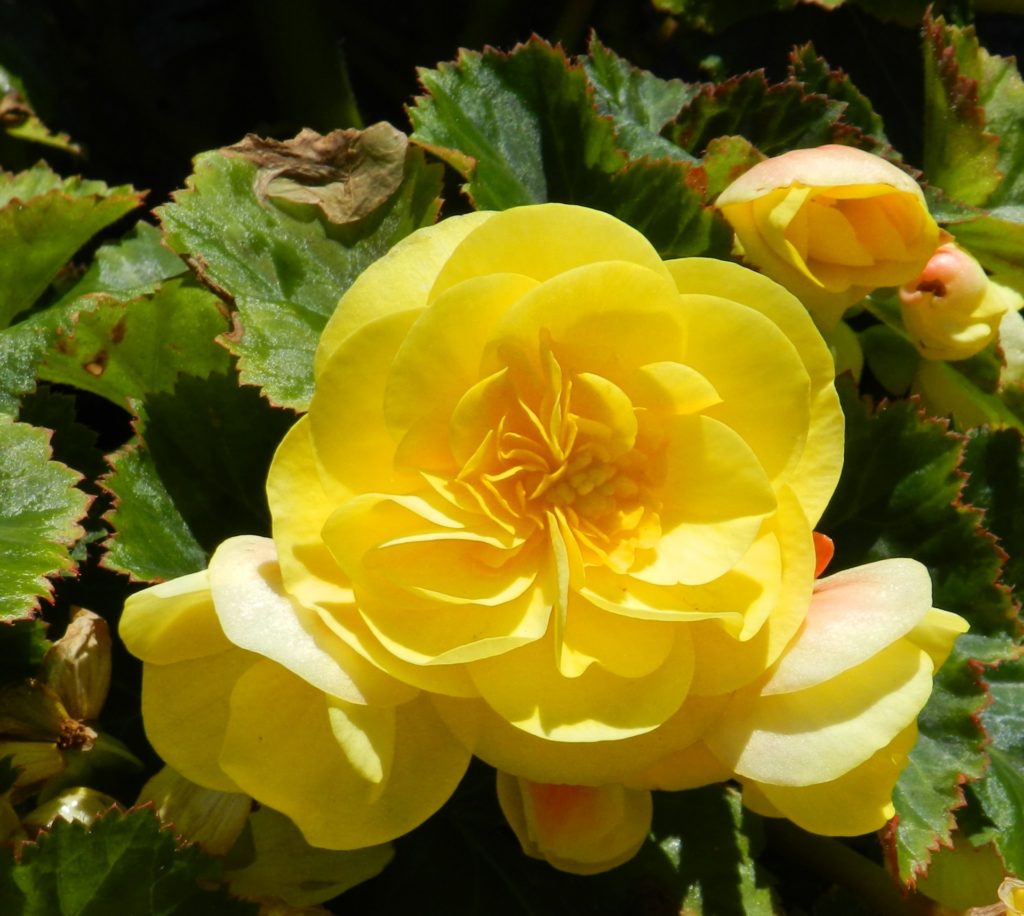
Care features:
Loves a permanent place, with its frequent change, it ceases to actively grow. It is undemanding to soils, but during the period of active flowering it requires feeding with phosphorus-potassium fertilizers. Loves humid air, but due to lush flowering, spraying is not recommended. It is advisable to install a humidifier or a bowl of water nearby.
Benefits:
- reproduces by all available methods: dividing a bush or rhizome, layering, seeds;
- looks good in any room or office desk.
Disadvantages:
- there are deciduous varieties, when buying it is necessary to clarify;
- demanding on moisture.
Schlumberger
The most unpretentious in the category and widely known as the Decembrist. Blooms only in winter, rests in summer. Refers to forest cacti. The color of the flower is predominantly bright pink, but in recent years varieties with white, pale pink and purple flowers have been bred.

Care features:
During flowering, it is better not to disturb, not to rearrange it to another place, otherwise it will throw off all the color. During flowering, it is worth feeding with microelements. Lives up to 20 years with good care.
Benefits:
- grows on the north and east windows of the apartment;
- blooms for a long time in winter, when everything has already wilted.
Disadvantages:
- regular spraying;
- requires pruning once a year;
Woody plants
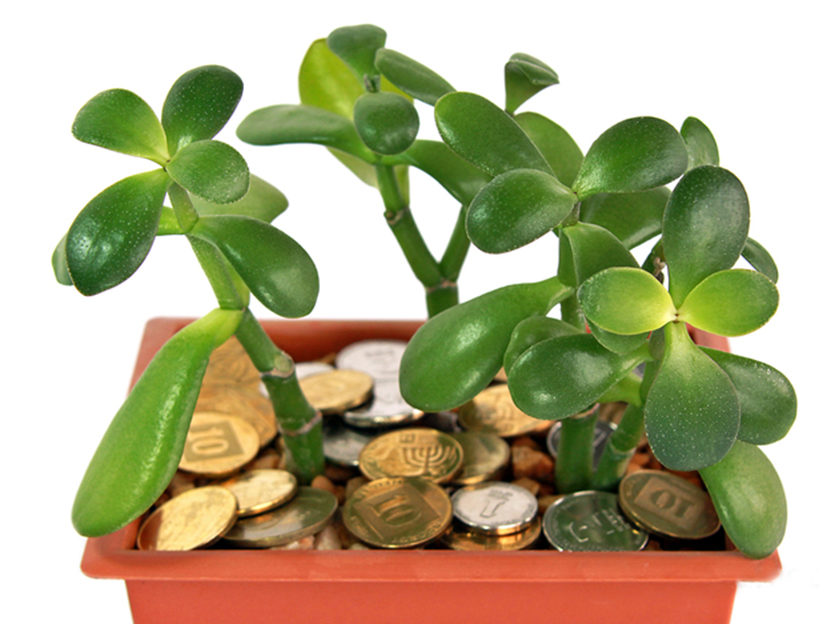
Minimum maintenance and maximum space is all you need. In nature, trees grow by themselves, but apartments still need an atmosphere for growth. Not always tall, but always growing in a single stem and well-developed leaves.
Ficus
Popular indoor seedling. There are dwarf varieties and large trees. With sufficient light, they develop well, the leaves have a beautiful, healthy appearance. And in ficus, the state of the leaf is the main indicator of a healthy plant.

Care features:
A tree with large leaves must be wiped from dust, small ones can be washed in the shower or sprayed. It feeds in spring-summer with complex fertilization with a predominance of nitrogen.
Benefits:
- very hardy plant, tolerates heat, coolness, occasional watering;
- large species are well suited for large empty spaces and take up a lot of space.
Disadvantages:
- many form a tree by pruning, get compact bushes, it takes time;
- should not be placed next to heating appliances.
Crassula
The well-known money tree or fat woman. She came to us from Africa and this explains her unpretentiousness to watering. Thick leaves accumulate moisture and use it sparingly.
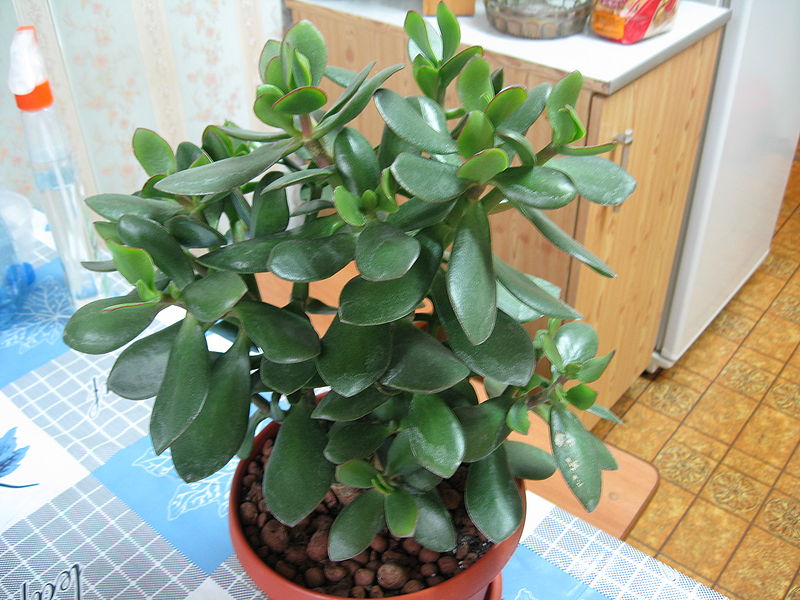
Care features:
Wide roots require a spacious pot, this must be taken into account when transplanting. It grows very slowly, even with good feeding. In the spring they are fed with nitrate or urea, in the summer they are complex.
Benefits:
- can grow for a long time in one pot and in a permanent place;
- neat bush, looks good on an office desk.
Disadvantages:
- loves fresh air and feels good when ventilated;
- trimming is required to form.
Hibiscus
A large, well-growing plant is classified as a flowering shrub. An adult plant takes up enough room in the room. Many housewives prune the bush to form a compact form. Long-liver, can grow up to 20 years.
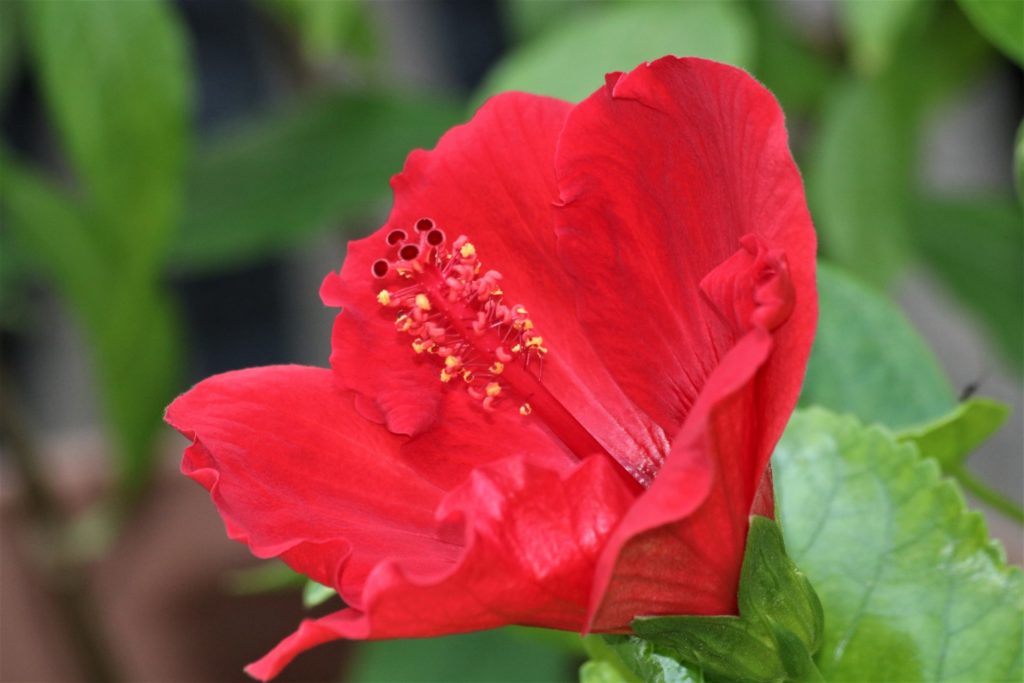
It blooms with large gramophones, the main color is red, but breeders also breed pink, crimson, burgundy. At one time it disappeared from the apartments, but in recent years it reappears on the windows.
Care features:
Requires regular feeding, complex forms rich in potassium. The lack of this element affects the number of flowers, as well as the duration of flowering.
Benefits:
- can be grown in any size, tolerates pruning well;
- beautiful and unpretentious;
- develops well anywhere in the apartment, but it can bloom poorly.
Disadvantages:
- regular pruning, otherwise you will get lush greenery in the apartment;
- spraying only in the early morning.
The most unpretentious
There are plants that have been planted and forgotten. This is certainly not entirely true, but many do not require care, while developing steadily.
Sansevieria
The famous pike tail is the perfect find for busy housewives. For a long time, breeders did not work on a variety of species, but now new indoor varieties have appeared. They vary in color from pale green to dark leaves. There are also leaves with a border of contrasting greenery.
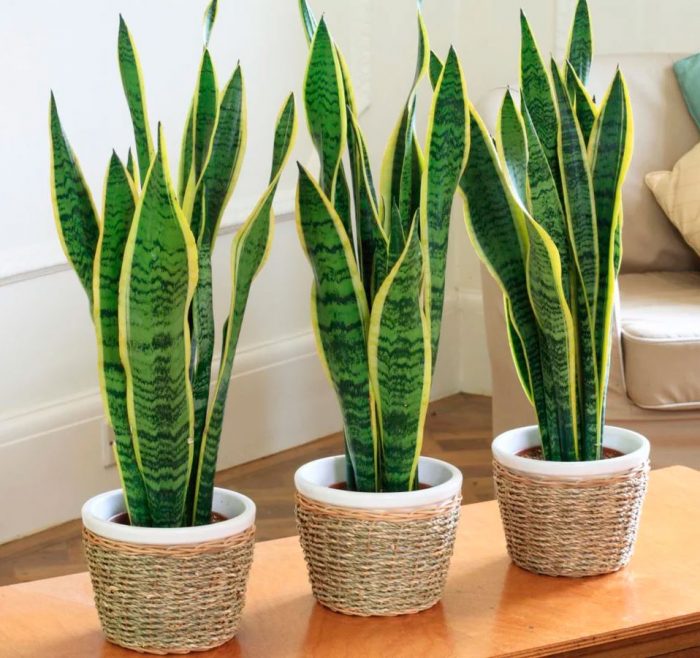
It grows well anywhere in the apartment, but it develops better on sunny soil. You can water 1-2 times a month, less often in winter.
Care features:
It can grow for several years in one pot. It is necessary to transplant when all the space is occupied and the flower begins to squeeze out the walls.
Benefits:
- absolutely unpretentious;
- looks good both in the living room and in the halls of offices;
- rarely transplanted.
Disadvantages:
- few species, all varieties are similar to each other.
Chlorophytum
Housewives often put this plant in the kitchen, it is believed that it disinfects the air well. Chlorophytum is a surprisingly viable plant, with minimal maintenance it not only grows, but also actively reproduces.

Narrow leaves of light green color or with a contrasting border look good in any composition. On a window or flower stand, they coexist well with flowering and woody plants. The compact shape allows the pot to be installed in small rooms.
Care features:
The plant reproduces well with a mustache. They can be easily rooted in fertile soil. It is recommended to remove cuttings in a timely manner, they draw forces from an adult seedling.
Benefits:
- compactness without additional maintenance;
- breeds easily.
Disadvantages:
- loves airing;
- with frequent watering, the outlet may rot.
Aloe
Useful and unpretentious, well-known and popular for the home. Spiny, sprawling and completely unpretentious. He loves fresh air and feels great on the balcony in summer.
It was often kept at home because of its medicinal properties; in industry it is used as part of many creams and ointments. The selection has brought out decorative forms, which have become a real decoration of the apartment.

Care features:
A transplant is required when aloe grows strongly; it can sit in one pot for many years. It will not grow, but it will not die either.
Benefits:
- medicinal;
- compact;
- rare watering.
Disadvantages:
- barbed:
- layers take root for a long time.
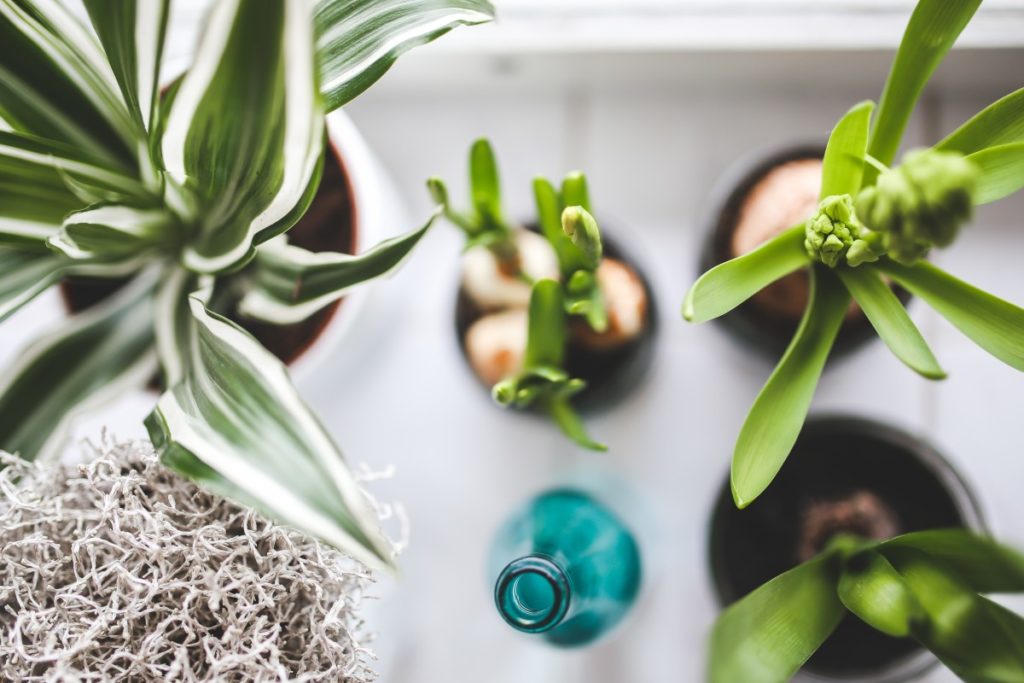
Output
For busy housewives or those who don't really like tinkering with plants, this list is a great recommendation for growing greenery at home. An apartment without flowers is boring and faceless, and with the advent of plants, it comes to life.
It is easy to make mistakes when choosing, sometimes a beautiful-looking flower will require a lot of attention and additional care products. Others, cheap but very attractive, will delight you every day, and will require a minimum of maintenance of an indoor garden.


